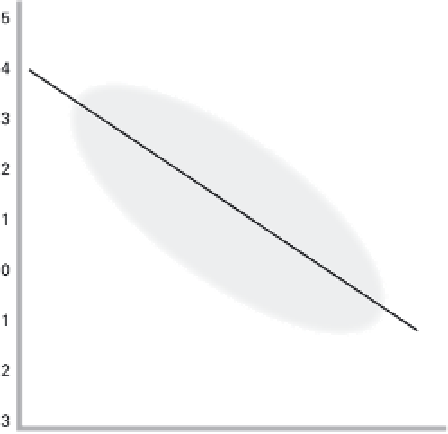Environmental Engineering Reference
In-Depth Information
4.10 Mammalian body masses and densities. (a) Log-linear
relation posited by Damuth (1993). (b) Nonlinear relation
found by Silva and Downing (1995).
in undisturbed ecosystems. Densities of the largest her-
bivores (number/area) are very low, but in some eco-
systems their combined energy density rivals that of soil
invertebrates. Up to the early 1970s the Ruwenzori Na-
tional Park in Uganda supported as much as 145 kJ/m
2
of large herbivores, Serengeti about 60 kJ/m
2
. These
densities are not matched anywhere else on this planet.
Such social insects as ants and termites usually do not
add up to more than 20 kJ/m
2
. Even in tropical forests
total avifaunas barely surpass 1 kJ/m
2
. Insectivorous
mammals are frequently abundant, but their total zoo-
mass is nearly always below 1 kJ/m
2
because their bodies
are small. Carnivorous zoomass in the Ngorongoro
Crater was less than 0.7 kJ/m
2
, roughly 1% of the her-
bivorous prey (Schaller 1972). And a shift from strict
herbivory to omnivory is well illustrated with primates:
the densities of folivorous Lemur fulvus go up to 16 kJ/
m
2
, those of herbivorous gorillas are about 1.5 kJ/m
2
,
and those of omnivorous chimpanzees are about 0.5 kJ/
m
2
(Bernstein and Smith 1979).
Damuth's (1981) plot of mammalian densities and
body masses (fig. 4.10) showed an overall negative slope
of
0.75 or
2.25 when related to characteristic body
length (M is l
3
, and hence M
0
:
75
is equal to l
2
:
25
).
More interestingly, if the BMR were perfectly propor-
tional to M
0
:
75
(it is not; see section 4.1), this rule would
imply that energy harvested daily per unit area is a con-
stant independent of the unit mass. Larger species do not
































































